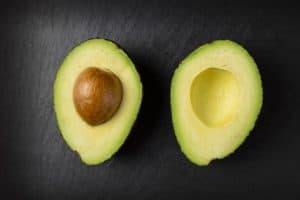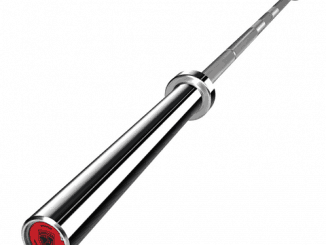It’s a high-fat, low-carb diet that sends your body into a state of ketosis, during which it primarily uses dietary fat and body fat for energy instead of glucose from carbs.
Ketone bodies, which are the by-product of the metabolism of fat, rise to elevated levels in the blood.
Ketosis is generally recognized to occur when ketone levels rise to 0.5 mmol/L or more. This can happen about 2 days after starting severe carb restrictions – which means eating less than 20-35 grams of carbs per day. However, it can take 4-6 weeks before the body is fully adapted to ketosis.
Keto, as the ketogenic diet is known, is a low-carbohydrate, high-fat diet that forces the body to burn fats rather than carbohydrates. Normally, the carbs contained in food are converted into glucose, which is then transported around the body and is used to provide energy for the entire body – and particularly for the brain. However, if there is little carbohydrate in the diet, the liver converts fat into fatty acids and ketone bodies. The ketone bodies can then replace glucose as an energy source.
The state of using primarily ketone bodies for energy instead of glucose is known as ketosis. In contrast, a state of glycolysis is one in which blood glucose provides energy. Ketosis is a result of metabolizing fat to provide energy.
Why would this be desirable? Ketosis is considered the body’s ultimate fat-burning mode. In glycolysis, higher levels of insulin promote storage of body fat and block release of fat from adipose tissues, while in ketosis, fat reserves are readily released and consumed. Therefore, keto is excellent for weight loss, but there are other benefits as well.

Benefits of the Keto Diet
- Weight Loss – As mentioned earlier, weight loss is easy on keto – because your body will be in fat-burning mode exclusively. Ketosis is how your body would respond in a fasting (or starvation) situation – once your body depleted all glycogen (stored glucose) reserves – it would begin to burn body fat for energy. The keto diet doesn’t involve starvation obviously, but you can mimic the effect by keeping carb intake severely restricted, or you can kick-start the ketosis state by fasting. It should be mentioned that weight loss, on any diet, requires a caloric deficit – you’ve got to burn more calories than you consume.
- Medical Treatment – Keto has real therapeutic value backed by scientific research. It has been used for many years to treat childhood epilepsy, and there is some evidence that it helps with neurodegenerative disorders including Alzheimer’s disease and Parkinson’s disease. There is also ongoing research using therapeutic ketosis for cancer – to starve cancerous tumors of the glucose fuel they require. It’s not a proven technique yet, but shows promise.
- Control of Blood Sugar and Insulin Resistance – The low carb nature of the diet means there’s very little glucose circulating (blood sugar) and in turn there’s far less insulin needed by the body.
- Stable Energy Levels and Mental Focus – with less blood sugar and insulin – and the associated roller-coaster ride of energy levels this can induce – many claim better ability to focus.
- Cholesterol and Blood Pressure – Ketogenic diets often show improvements in both cholesterol and blood pressure.
How Long Does it Take to Get Into Ketosis?
You need to be very strict and consistent with carb intake – otherwise ketosis won’t take hold. How long does it typically take to transition to ketosis from glycolosis? Usually about 48 hours – but this can depend on the individual, their level of activity, and the amount of stored glycogen in their muscles and liver. You can potentially speed up the transition to ketosis by fasting (which will help eliminate glycogen quicker) or by performing intense exercise, which has the same effect.
The ketogenic diet may also be called LCHF, for Low Carb High Fat. The high fat content of the ketogenic diet is an important component. A typical mistake is to eat too much protein – which can be converted to glucose by the body via gluconeogenesis. This will interfere with the body’s production of ketones. Therefore, protein should be kept to not more than 20%-30% of total calories.
What does a typical keto diet look like? Here’s the % of calories from each macro group:
- Fats – 75-90% of total calories – for energy
- Protein – 10%-25% – Enough for body maintenance and tissue repair
- Carbs – 0-5% – Absolute minimum amounts taken in as a consequence of getting vitamins, minerals, and fiber from vegetables
And as you enter ketosis, you may find that you experience something called keto flu – a lack of energy, achy joints, headaches – all symptoms very similar to a mild case of the flu. This phase passes pretty quickly however.
Your body will rid itself of all excess ketones – those not used for energy. This means another sign you’ve made it to ketosis include keto breath and urine with a vaguely fruity smell – this is due to the acetone.
And while entering ketosis can happen as quickly as 2 days time – it will take several weeks before your metabolism is fully keto-adapted – so don’t be discouraged and give up too soon to reap the benefits.
Lastly, there’s quite a few things you can do to make this process easier – we have a list of tips and tricks for making the move to ketosis easier.
Keto Diet Foods

As mentioned previously, achieving and maintaining a state of ketosis requires very minimal carb intake – possibly as little as no more than 20 grams per day. Protein intake is also restricted on this diet – it’s typically recommended that it account for not more than 25%-30% of your caloric intake on a keto diet. This is because your body can turn protein into glucose through the process of gluconeogensis – and this raises insulin – which stops ketosis from taking hold.
Therefore, with carbs and protein intake being restricted the remainder of your caloric needs have to come from the third primary macronutrient – dietary fat.
The Paleo diet is not ketogenic, unless you are restricting carb intake to levels sustaining ketosis. Otherwise, the paleo eating principles are compatible with keto.
Other popular diets that utilize ketogenic principles include the Atkins diet –
Phase 1 of the Atkins diet is ketogenic, as it limits carb intake to 20 grams or less per day. The other phases of the Atkins diet are not necessarily ketogenic. Atkins may also have too much protein to allow ketosis.
And that is perhaps the biggest counter argument against keto – it is a high fat diet. This diet will likely require a high saturated fat intake. Historically, this has not been the recommendation of the US government, or of most physicians and dietitians. But the truth is that research shows saturated fats are easily metabolized and broken down when part of a low-carb diet. Therefore, it’s possible that high levels of saturated fat are only an issue when combined with lots of carbohydrates. Saturated fats can also raise your levels of the good cholesterol (HDL) and increase the particle size of LDL – rendering it less dangerous. Secondly – you can try to minimize saturated fats and replace them with the monounsaturated fats – olive oil, avocado oil, and fish oil are all renowned for their health benefits.
This drastically low carb intake is challenging to maintain for most people. It requires relatively extreme dietary changes, and can be especially difficult situations where food choices or limited.
So what might you typically eat? or more importantly not eat? The biggest shock for most people is the total lack of grains, starches, or sugars. And that includes fruit.
To achieve the bare minimum level of dietary carb intake required for ketosis, you will not eat foods such as these:
- Grains – Such as wheat, rice, corn, and cereals
- Sugars – Honey, agave, and maple syrup
- Fruits – Apples, bananas, peaches, and oranges
- Tubers – Potato, sweet potatoes, and other tubers
Of course! But you’ll have to take extra care to ensure there aren’t too many hidden carbs in your meal – be wary of sauces and salad dressings in particular. Otherwise, a Cobb salad or a fatty cut of meat (or fish) are excellent choices. Combine these with a side of veggies cooked in butter – that’s a keto friendly meal.
You will be able to eat the following:
- Meats – beef, lamb, pork, poultry, and eggs.
- Fish – Of all types – fatty fish such as salmon or lean.
- Leafy Greens – Spinach, kale, and other lettuce varieties.
- Vegetables – Broccoli, cauliflower, etc.
- High Fat Dairy – Cheeses, high fat cream, and butter
- Nuts and seeds – Macadamias, walnuts, sunflower seeds
- Avocados – low in carbs, high in fiber, and healthy fats
- Berries – raspberries, blackberries, and other low GI berries
- Sweeteners – Stevia, erythritol, monk fruit, and other low-carb sweeteners are to be avoided, for reasons we’ll expand upon below.
- Healthy fats – Coconut oil and olive oil.
Coconut oil in particular is an excellent food for the keto diet. It’s got very high levels of Medium-Chain Triglycerides (MCTs) – these are fatty acids that are quickly and easily burned to produce ketones.
Lastly, don’t forget about fiber. Dietary fiber is not digestible and provides no energy or nutrients – but still provides important health benefits. Fiber provides bulk which reduces the transit time through your digestive system and also serves as food for your gut’s microbiome. Vegetables will be your best source of fiber while on a keto diet. Look for those that have a low number of “net carbs” – the difference between total carbs and net carbs is the amount of fiber.
What about beverages? These are all keto friendly:
- Water
- Coffee – black or with creamer only – no added sugar, of course. Some studies have shown the caffeine in coffee to have a mild ketogenic effect – encouraging the use of fat for energy.
- Tea
Anything without carbs really, so all types of milk are out. But how about diet sodas and other non-calorie beverages that use artificial sweeteners? It seems that at least some artificial sweeteners – even those with no actual carbohydrate content – can still raise insulin. And raising insulin levels will interfere with getting into ketosis. So, diet sodas the anything else with artificial sweeteners are out as well.
Ketogenic Diet – Is It Safe?
Generally speaking, the ketogenic diet is safe for healthy adults. For children, and individuals with certain conditions it is recommended to consult with your physician before starting the diet.
Diabetic ketoacidosis is a situation where someone’s level of ketones are very high and their level of blood glucose is also very high. This is a dangerous situation, and can be fatal. It can occur when the body isn’t making enough insulin. Without the signal from insulin to store the blood sugar away, the body thinks it needs energy and is therefore also producing ketones. Remember that the presence of insulin can stop ketosis, but if your body isn’t capable of producing insulin, such as for a Type 1 Diabetic, there simply won’t be any (or enough) insulin. This is a potentially deadly situation because the chemical balance of the blood is thrown off due to the accumulation of blood sugar and ketones. And while this situation is rare in Type 2 Diabetics, anyone considering a ketogenic diet with that condition should consult their doctor first. It should not be a concern for an individual with normal insulin production and insulin sensitivity.
In Summary
Ketone bodies are the compounds created during the metabolism of fat. There are three kinds of ketone bodies:
- Acetoacetate (AcAc)
- Beta-hydroxybutryrate (BHB)
- Acetone
In summary, a ketogenic diet is a proven body fat burning, weight loss diet. But it requires strict adherence to a low carb protocol that can be difficult to stick with over the long term. Besides weight loss, it does have potential health benefits for a variety of conditions.
Certain individuals – including those with Type 1 or Type 2 Diabetes, pregant women, and those who have certain digestive issues – should consult with their doctor before starting a keto diet. However, for most healthy individuals it is a popular and safe option.
If you think it’s an option you certainly can try this diet and find out if it works for you.

References
- Gasior M, Rogawski MA, Hartman AL (September 2006). “Neuroprotective and disease-modifying effects of the ketogenic diet.” Behav Pharmacol. 17: 431–9.
- Maalouf M, Rho JM, Mattson MP (Mar 2009). “The neuroprotective properties of calorie restriction, the ketogenic diet, and ketone bodies”. Brain Res Rev. 59 (2): 293–315.
- Veech RL. “The therapeutic implications of ketone bodies: the effects of ketone bodies in pathological conditions: ketosis, ketogenic diet, redox states, insulin resistance, and mitochondrial metabolism.” Prostaglandins Leukot Essent Fatty Acids. 2004 Mar;70(3):309-19.
- Westman EC, Mavropoulos J, Yancy WS, Volek JS. “A review of low-carbohydrate ketogenic diets.” Curr Atheroscler Rep. 2003 Nov;5(6):476-83.
- M. Yanina Pepino, Courtney D. Tiemann, Bruce W. Patterson, Burton M. Wice and Samuel Klein,“Sucralose Affects Glycemic and Hormonal Responses to an Oral Glucose Load.” Diabetes Care 2013 Apr; DC_122221.
- E. Forsythe, et al. “Limited Effect of Dietary Saturated Fat on Plasma Saturated Fat in the Context of a Low Carbohydrate Diet” Lipids. 2010 Oct; 45(10): 947–962.

Tim is the founder of FitAtMidlife.com – an avid gym rat for 30+ years, he’s a reviewer of many, many shoes – and founder of the Speed Bag Gathering – the world’s only gathering of speed bag punching enthusiasts. See more gym reviews at Tim’s YouTube channel.




The quote below from the article is incorrect. GlucoGeogenesis is a demand driven system not a supply driven system. Your body will only produce as much glucose as the body needs. This statement could keep people from eating adequate protein which is approximately .8 grams to 1 gram of protein per LEAN pound of body weight. Percentages are not idea for a properly formulated way of eating.
“A typical mistake is to eat too much protein – which can be converted to glucose by the body via gluconeogenesis. This will interfere with the body’s production of ketones. Therefore, protein should be kept to not more than 20%-30% of total calories.s”